-
EXECUTIVE SUMMARY 21
-
MARKET INTRODUCTION 24
-
DEFINITION 24
-
SCOPE OF THE STUDY 24
-
RESEARCH OBJECTIVE 24
-
MARKET STRUCTURE 25
-
RESEARCH METHODOLOGY 26
-
OVERVIEW 26
-
DATA FLOW 28
- DATA MINING PROCESS 28
-
PURCHASED DATABASE: 29
-
SECONDARY SOURCES: 30
- SECONDARY RESEARCH DATA FLOW: 31
-
PRIMARY RESEARCH: 32
- PRIMARY RESEARCH DATA FLOW: 33
- PRIMARY RESEARCH: NUMBER OF INTERVIEWS CONDUCTED 34
-
APPROACHES FOR MARKET SIZE ESTIMATION: 35
- REVENUE ANALYSIS APPROACH 35
-
DATA FORECASTING 36
- DATA FORECASTING TYPE 36
-
DATA MODELING 37
- MICROECONOMIC FACTOR ANALYSIS: 37
- DATA MODELING: 38
-
MARKET DYNAMICS 41
-
INTRODUCTION 41
-
DRIVERS 42
- RISING ADOPTION OF E-LEARNING AND STEM EDUCATION. 42
- THE INCREASING AUTOMATION IN THE EDUCATION SECTOR. 43
- RISING GOVERNMENT AND NON-GOVERNMENTAL ORGANIZATION (NGOS) INVESTMENTS IN THE EDUCATION INDUSTRY 43
-
RESTRAINTS 44
- HIGH INITIAL INVESTMENT AND MAINTENANCE COSTS. 44
- TEACHERS TRAINING AND READINESS 44
- LACK OF REQUIRED INFRASTRUCTURE IN SOME SCHOOLS AND INSTITUTIONS. 45
-
OPPORTUNITIES 45
- INTEGRATION OF AI AND IOT IN EDUCATIONAL ROBOT SYSTEMS. 45
- INCREASING ADOPTION OF EDTECH SOLUTION 46
-
COVID-19 IMPACT ANALYSIS 46
- IMPACT ON EDUCATIONAL ROBOT MANUFACTURERS 47
- IMPACT ON EDUCATIONAL ROBOT COMPONENT SUPPLIERS 47
- IMPACT ON DEMAND OF ROBOTS IN EDUCATION 47
- COVID-19 IMPACT ON SUPPLY CHAIN DELAYS 48
-
MARKET FACTOR ANALYSIS 49
-
SUPPLY CHAIN ANALYSIS 49
- PARTICIPANTS 50
- VALUE PERCOLATION ACROSS THE CHAIN 50
- INTEGRATION LEVELS 50
- KEY ISSUES ADDRESSED 51
-
PORTER''S FIVE FORCES MODEL 52
- THREAT OF NEW ENTRANTS 52
- THREAT OF SUBSTITUTES 53
- BARGAINING POWER OF SUPPLIERS 53
- BARGAINING POWER OF BUYERS 53
- INTENSITY OF RIVALRY 53
-
MARKET & TECHNOLOGY TRENDS 53
- HYBRID LEARNING WITH EDUCATIONAL ROBOTS 54
- ARTIFICIAL INTELLIGENCE (AI) AND MACHINE LEARNING (ML) IN EDUCATIONAL ROBOTICS 54
- PERSONALIZED AND ADAPTIVE ROBOTICS 54
- COLLABORATION AND SOCIAL ROBOTICS 54
-
MARKET SWOT ANALYSIS 54
-
MARKET PESTEL ANALYSIS 55
- POLITICAL FACTORS: 55
- ECONOMIC FACTORS: 55
- SOCIAL FACTORS: 55
- TECHNOLOGICAL FACTORS: 55
- ENVIRONMENTAL FACTORS: 55
- LEGAL FACTORS: 55
-
REGULATORY OUTLOOK 55
-
GLOBAL EDUCATIONAL ROBOTS MARKET, BY TYPE 58
-
OVERVIEW 58
-
PROGRAMMABLE ROBOTS 60
-
HUMANOID ROBOT 61
-
PRE-BUILD ROBOT 61
-
MODULAR ROBOTS 62
-
GLOBAL EDUCATIONAL ROBOTS MARKET, BY COMPONENTS 63
-
INTRODUCTION 63
-
SENSORS 65
-
END-EFFECTORS 65
-
ACTUATORS 66
-
CONTROLLERS 66
-
SOFTWARES 67
-
GLOBAL EDUCATIONAL ROBOTS MARKET, BY APPLICATION 68
-
INTRODUCTION 68
-
HIGHER EDUCATION 70
-
SPECIAL EDUCATION 70
-
GLOBAL EDUCATIONAL ROBOTS MARKET, BY REGION 71
-
OVERVIEW 71
- GLOBAL EDUCATIONAL ROBOTS MARKET, BY REGION, 2022 VS 2032 (USD MILLION) 71
- GLOBAL EDUCATIONAL ROBOTS MARKET, BY REGION, 2019–2032 (USD MILLION) 72
- GLOBAL EDUCATIONAL ROBOTS MARKET, BY REGION, 2019–2032 (UNITS) 72
-
NORTH AMERICA 73
- US 77
- CANADA 79
- MEXICO 81
-
EUROPE 83
- UK 88
- GERMANY 90
- FRANCE 92
- ITALY 94
- SPAIN 96
- REST OF EUROPE 98
-
ASIA-PACIFIC 100
- CHINA 104
- JAPAN 106
- INDIA 108
- SOUTH KOREA 110
- REST OF ASIA-PACIFIC 112
-
MIDDLE EAST & AFRICA 114
-
SOUTH AMERICA 116
-
COMPETITIVE LANDSCAPE 118
-
INTRODUCTION 118
-
MARKET SHARE ANALYSIS, 2022 118
-
COMPETITOR DASHBOARD 119
-
KEY DEVELOPMENTS & GROWTH STRATEGIES 120
- PRODUCT LAUNCH/PRODUCT APPROVAL/PRODUCT DEVELOPMET 120
-
PARTNERSHIP/COLLABORATION 121
-
COMPANY PROFILE 122
-
ABB LTD. 122
- COMPANY OVERVIEW 122
- FINANCIAL OVERVIEW 123
- PRODUCTS OFFERED 124
- KEY DEVELOPMENTS 124
- SWOT ANALYSIS 125
- KEY STRATEGIES 125
-
SOFTBANK GROUP. 126
- COMPANY OVERVIEW 126
- FINANCIAL OVERVIEW 127
- PRODUCTS OFFERED 128
- KEY DEVELOPMENTS 128
- SWOT ANALYSIS 129
- KEY STRATEGIES 129
-
BLUE FROG ROBOTICS. 130
- COMPANY OVERVIEW 130
- FINANCIAL OVERVIEW 130
- PRODUCTS OFFERED 130
- KEY DEVELOPMENTS 131
- SWOT ANALYSIS 131
- KEY STRATEGIES 132
-
WONDER WORKSHOP. 133
- COMPANY OVERVIEW 133
- FINANCIAL OVERVIEW 133
- PRODUCTS OFFERED 134
- KEY DEVELOPMENTS 134
-
WOWEE. 135
- COMPANY OVERVIEW 135
- FINANCIAL OVERVIEW 135
- PRODUCTS OFFERED 136
- KEY DEVELOPMENTS 136
-
ROBOTIS 137
- COMPANY OVERVIEW 137
- FINANCIAL OVERVIEW 137
- PRODUCTS OFFERED 138
- KEY DEVELOPMENTS 138
-
SANBOT INNOVATION TECHNOLOGY. 139
- COMPANY OVERVIEW 139
- FINANCIAL OVERVIEW 139
- PRODUCTS OFFERED 139
- KEY DEVELOPMENTS 139
-
HANSON ROBOTICS. 140
- COMPANY OVERVIEW 140
- FINANCIAL OVERVIEW 140
- PRODUCTS OFFERED 140
- KEY DEVELOPMENTS 141
- SWOT ANALYSIS 141
- KEY STRATEGIES 141
-
HONDA. 142
- COMPANY OVERVIEW 142
- FINANCIAL OVERVIEW 143
- PRODUCTS OFFERED 143
- KEY DEVELOPMENTS 143
- SWOT ANALYSIS 144
- KEY STRATEGIES 144
-
SPHERO. 145
- COMPANY OVERVIEW 145
- FINANCIAL OVERVIEW 145
- PRODUCTS OFFERED 145
- KEY DEVELOPMENTS 146
- SWOT ANALYSIS 146
- KEY STRATEGIES 146
-
YASKAWA. 147
- COMPANY OVERVIEW 147
- FINANCIAL OVERVIEW 148
- PRODUCTS OFFERED 148
- KEY DEVELOPMENTS 149
- SWOT ANALYSIS 149
- KEY STRATEGIES 149
-
LEGO. 150
- COMPANY OVERVIEW 150
- FINANCIAL OVERVIEW 151
- PRODUCTS OFFERED 151
- KEY DEVELOPMENTS 152
- SWOT ANALYSIS 152
- KEY STRATEGIES 152
-
MAKEBLOCK, CO. LTD. 153
- COMPANY OVERVIEW 153
- FINANCIAL OVERVIEW 153
- PRODUCTS OFFERED 153
- KEY DEVELOPMENTS 154
- SWOT ANALYSIS 154
- KEY STRATEGIES 154
-
MODULAR ROBOTICS. 155
- COMPANY OVERVIEW 155
- FINANCIAL OVERVIEW 155
- PRODUCTS OFFERED 155
- KEY DEVELOPMENTS 155
-
-
LIST OF TABLES
-
QFD MODELING FOR MARKET SHARE ASSESSMENT 38
-
GLOBAL EDUCATIONAL ROBOTS MARKET, BY TYPE, 2025-2034 (USD MILLION) 59
-
GLOBAL EDUCATIONAL ROBOTS MARKET, BY TYPE, 2025-2034 (UNITS) 59
-
GLOBAL EDUCATIONAL ROBOTS MARKET, BY COMPONENTS, 2025-2034 (USD MILLION) 64
-
GLOBAL EDUCATIONAL ROBOTS MARKET, BY COMPONENTS, 2025-2034 (UNITS) 64
-
GLOBAL EDUCATIONAL ROBOTS MARKET, BY APPLICATION, 2025-2034 (USD MILLION) 69
-
GLOBAL EDUCATIONAL ROBOTS MARKET, BY APPLICATION, 2025-2034 (UNITS) 69
-
GLOBAL EDUCATIONAL ROBOTS MARKET, BY REGION, 2019–2032 (USD MILLION) 72
-
GLOBAL EDUCATIONAL ROBOTS MARKET, BY REGION, 2019–2032 (UNITS) 72
-
NORTH AMERICA: EDUCATIONAL ROBOTS MARKET, BY COUNTRY, 2025-2034 (USD MILLION) 74
-
NORTH AMERICA: EDUCATIONAL ROBOTS MARKET, BY COUNTRY, 2025-2034 (UNITS) 75
-
NORTH AMERICA EDUCATIONAL ROBOTS MARKET, BY TYPE, 2025-2034 (USD MILLION) 75
-
NORTH AMERICA EDUCATIONAL ROBOTS MARKET, BY TYPE, 2025-2034 (UNITS) 75
-
NORTH AMERICA EDUCATIONAL ROBOTS MARKET, BY COMPONENT, 2025-2034 (USD MILLION) 75
-
NORTH AMERICA EDUCATIONAL ROBOTS MARKET, BY COMPONENT, 2025-2034 (UNITS) 76
-
NORTH AMERICA EDUCATIONAL ROBOTS MARKET, BY APPLICATION, 2025-2034 (USD MILLION) 76
-
NORTH AMERICA EDUCATIONAL ROBOTS MARKET, BY APPLICATION, 2025-2034 (UNITS) 76
-
US EDUCATIONAL ROBOTS MARKET, BY TYPE, 2025-2034 (USD MILLION) 77
-
US EDUCATIONAL ROBOTS MARKET, BY TYPE, 2025-2034 (UNITS) 77
-
US EDUCATIONAL ROBOTS MARKET, BY COMPONENT, 2025-2034 (USD MILLION) 77
-
US EDUCATIONAL ROBOTS MARKET, BY COMPONENT, 2025-2034 (UNITS) 78
-
US EDUCATIONAL ROBOTS MARKET, BY APPLICATION, 2025-2034 (USD MILLION) 78
-
US EDUCATIONAL ROBOTS MARKET, BY APPLICATION, 2025-2034 (UNITS) 78
-
CANADA EDUCATIONAL ROBOTS MARKET, BY TYPE, 2025-2034 (USD MILLION) 79
-
CANADA EDUCATIONAL ROBOTS MARKET, BY TYPE, 2025-2034 (UNITS) 79
-
CANADA EDUCATIONAL ROBOTS MARKET, BY COMPONENT, 2025-2034 (USD MILLION) 79
-
CANADA EDUCATIONAL ROBOTS MARKET, BY COMPONENT, 2025-2034 (UNITS) 80
-
CANADA EDUCATIONAL ROBOTS MARKET, BY APPLICATION, 2025-2034 (USD MILLION) 80
-
CANADA EDUCATIONAL ROBOTS MARKET, BY APPLICATION, 2025-2034 (UNITS) 80
-
MEXICO EDUCATIONAL ROBOTS MARKET, BY TYPE, 2025-2034 (USD MILLION) 81
-
MEXICO EDUCATIONAL ROBOTS MARKET, BY TYPE, 2025-2034 (UNITS) 81
-
MEXICO EDUCATIONAL ROBOTS MARKET, BY COMPONENT, 2025-2034 (USD MILLION) 81
-
MEXICO EDUCATIONAL ROBOTS MARKET, BY COMPONENT, 2025-2034 (UNITS) 82
-
MEXICO EDUCATIONAL ROBOTS MARKET, BY APPLICATION, 2025-2034 (USD MILLION) 82
-
MEXICO EDUCATIONAL ROBOTS MARKET, BY APPLICATION, 2025-2034 (UNITS) 82
-
EUROPE: EDUCATIONAL ROBOTS MARKET, BY COUNTRY, 2025-2034 (USD MILLION) 85
-
EUROPE: EDUCATIONAL ROBOTS MARKET, BY COUNTRY, 2025-2034 (UNITS) 86
-
EUROPE EDUCATIONAL ROBOTS MARKET, BY TYPE, 2025-2034 (USD MILLION) 86
-
EUROPE EDUCATIONAL ROBOTS MARKET, BY TYPE, 2025-2034 (UNITS) 86
-
EUROPE EDUCATIONAL ROBOTS MARKET, BY COMPONENT, 2025-2034 (USD MILLION) 86
-
EUROPE EDUCATIONAL ROBOTS MARKET, BY COMPONENT, 2025-2034 (UNITS) 87
-
EUROPE EDUCATIONAL ROBOTS MARKET, BY APPLICATION, 2025-2034 (USD MILLION) 87
-
EUROPE EDUCATIONAL ROBOTS MARKET, BY APPLICATION, 2025-2034 (UNITS) 87
-
UK EDUCATIONAL ROBOTS MARKET, BY TYPE, 2025-2034 (USD MILLION) 88
-
UK EDUCATIONAL ROBOTS MARKET, BY TYPE, 2025-2034 (UNITS) 88
-
UK EDUCATIONAL ROBOTS MARKET, BY COMPONENT, 2025-2034 (USD MILLION) 88
-
UK EDUCATIONAL ROBOTS MARKET, BY COMPONENT, 2025-2034 (UNITS) 89
-
UK EDUCATIONAL ROBOTS MARKET, BY APPLICATION, 2025-2034 (USD MILLION) 89
-
UK EDUCATIONAL ROBOTS MARKET, BY APPLICATION, 2025-2034 (UNITS) 89
-
GERMANY EDUCATIONAL ROBOTS MARKET, BY TYPE, 2025-2034 (USD MILLION) 90
-
GERMANY EDUCATIONAL ROBOTS MARKET, BY TYPE, 2025-2034 (UNITS) 90
-
GERMANY EDUCATIONAL ROBOTS MARKET, BY COMPONENT, 2025-2034 (USD MILLION) 90
-
GERMANY EDUCATIONAL ROBOTS MARKET, BY COMPONENT, 2025-2034 (UNITS) 91
-
GERMANY EDUCATIONAL ROBOTS MARKET, BY APPLICATION, 2025-2034 (USD MILLION) 91
-
GERMANY EDUCATIONAL ROBOTS MARKET, BY APPLICATION, 2025-2034 (UNITS) 91
-
FRANCE EDUCATIONAL ROBOTS MARKET, BY TYPE, 2025-2034 (USD MILLION) 92
-
FRANCE EDUCATIONAL ROBOTS MARKET, BY TYPE, 2025-2034 (UNITS) 92
-
FRANCE EDUCATIONAL ROBOTS MARKET, BY COMPONENT, 2025-2034 (USD MILLION) 92
-
FRANCE EDUCATIONAL ROBOTS MARKET, BY COMPONENT, 2025-2034 (UNITS) 93
-
FRANCE EDUCATIONAL ROBOTS MARKET, BY APPLICATION, 2025-2034 (USD MILLION) 93
-
FRANCE EDUCATIONAL ROBOTS MARKET, BY APPLICATION, 2025-2034 (UNITS) 93
-
ITALY EDUCATIONAL ROBOTS MARKET, BY TYPE, 2025-2034 (USD MILLION) 94
-
ITALY EDUCATIONAL ROBOTS MARKET, BY TYPE, 2025-2034 (UNITS) 94
-
ITALY EDUCATIONAL ROBOTS MARKET, BY COMPONENT, 2025-2034 (USD MILLION) 94
-
ITALY EDUCATIONAL ROBOTS MARKET, BY COMPONENT, 2025-2034 (UNITS) 95
-
ITALY EDUCATIONAL ROBOTS MARKET, BY APPLICATION, 2025-2034 (USD MILLION) 95
-
ITALY EDUCATIONAL ROBOTS MARKET, BY APPLICATION, 2025-2034 (UNITS) 95
-
SPAIN EDUCATIONAL ROBOTS MARKET, BY TYPE, 2025-2034 (USD MILLION) 96
-
SPAIN EDUCATIONAL ROBOTS MARKET, BY TYPE, 2025-2034 (UNITS) 96
-
SPAIN EDUCATIONAL ROBOTS MARKET, BY COMPONENT, 2025-2034 (USD MILLION) 96
-
SPAIN EDUCATIONAL ROBOTS MARKET, BY COMPONENT, 2025-2034 (UNITS) 97
-
SPAIN EDUCATIONAL ROBOTS MARKET, BY APPLICATION, 2025-2034 (USD MILLION) 97
-
SPAIN EDUCATIONAL ROBOTS MARKET, BY APPLICATION, 2025-2034 (UNITS) 97
-
REST OF EUROPE EDUCATIONAL ROBOTS MARKET, BY TYPE, 2025-2034 (USD MILLION) 98
-
REST OF EUROPE EDUCATIONAL ROBOTS MARKET, BY TYPE, 2025-2034 (UNITS) 98
-
REST OF EUROPE EDUCATIONAL ROBOTS MARKET, BY COMPONENT, 2025-2034 (USD MILLION) 98
-
REST OF EUROPE EDUCATIONAL ROBOTS MARKET, BY COMPONENT, 2025-2034 (UNITS) 99
-
REST OF EUROPE EDUCATIONAL ROBOTS MARKET, BY APPLICATION, 2025-2034 (USD MILLION) 99
-
REST OF EUROPE EDUCATIONAL ROBOTS MARKET, BY APPLICATION, 2025-2034 (UNITS) 99
-
ASIA-PACIFIC: EDUCATIONAL ROBOTS MARKET, BY COUNTRY, 2025-2034 (USD MILLION) 101
-
ASIA-PACIFIC: EDUCATIONAL ROBOTS MARKET, BY COUNTRY, 2025-2034 (UNITS) 102
-
ASIA-PACIFIC EDUCATIONAL ROBOTS MARKET, BY TYPE, 2025-2034 (USD MILLION) 102
-
ASIA-PACIFIC EDUCATIONAL ROBOTS MARKET, BY TYPE, 2025-2034 (UNITS) 102
-
ASIA-PACIFIC EDUCATIONAL ROBOTS MARKET, BY COMPONENT, 2025-2034 (USD MILLION) 103
-
ASIA-PACIFIC EDUCATIONAL ROBOTS MARKET, BY COMPONENT, 2025-2034 (UNITS) 103
-
ASIA-PACIFIC EDUCATIONAL ROBOTS MARKET, BY APPLICATION, 2025-2034 (USD MILLION) 103
-
ASIA-PACIFIC EDUCATIONAL ROBOTS MARKET, BY APPLICATION, 2025-2034 (UNITS) 103
-
CHINA EDUCATIONAL ROBOTS MARKET, BY TYPE, 2025-2034 (USD MILLION) 104
-
CHINA EDUCATIONAL ROBOTS MARKET, BY TYPE, 2025-2034 (UNITS) 104
-
CHINA EDUCATIONAL ROBOTS MARKET, BY COMPONENT, 2025-2034 (USD MILLION) 104
-
CHINA EDUCATIONAL ROBOTS MARKET, BY COMPONENT, 2025-2034 (UNITS) 105
-
CHINA EDUCATIONAL ROBOTS MARKET, BY APPLICATION, 2025-2034 (USD MILLION) 105
-
CHINA EDUCATIONAL ROBOTS MARKET, BY APPLICATION, 2025-2034 (UNITS) 105
-
JAPAN EDUCATIONAL ROBOTS MARKET, BY TYPE, 2025-2034 (USD MILLION) 106
-
JAPAN EDUCATIONAL ROBOTS MARKET, BY TYPE, 2025-2034 (UNITS) 106
-
JAPAN EDUCATIONAL ROBOTS MARKET, BY COMPONENT, 2025-2034 (USD MILLION) 106
-
JAPAN EDUCATIONAL ROBOTS MARKET, BY COMPONENT, 2025-2034 (UNITS) 107
-
JAPAN AMERICA EDUCATIONAL ROBOTS MARKET, BY APPLICATION, 2025-2034 (USD MILLION) 107
-
JAPAN EDUCATIONAL ROBOTS MARKET, BY APPLICATION, 2025-2034 (UNITS) 107
-
INDIA EDUCATIONAL ROBOTS MARKET, BY TYPE, 2025-2034 (USD MILLION) 108
-
INDIA EDUCATIONAL ROBOTS MARKET, BY TYPE, 2025-2034 (UNITS) 108
-
INDIA EDUCATIONAL ROBOTS MARKET, BY COMPONENT, 2025-2034 (USD MILLION) 108
-
INDIA EDUCATIONAL ROBOTS MARKET, BY COMPONENT, 2025-2034 (UNITS) 109
-
INDIA EDUCATIONAL ROBOTS MARKET, BY APPLICATION, 2025-2034 (USD MILLION) 109
-
INDIA EDUCATIONAL ROBOTS MARKET, BY APPLICATION, 2025-2034 (UNITS) 109
-
SOUTH KOREA EDUCATIONAL ROBOTS MARKET, BY TYPE, 2025-2034 (USD MILLION) 110
-
SOUTH KOREA EDUCATIONAL ROBOTS MARKET, BY TYPE, 2025-2034 (UNITS) 110
-
SOUTH KOREA EDUCATIONAL ROBOTS MARKET, BY COMPONENT, 2025-2034 (USD MILLION) 110
-
SOUTH KOREA EDUCATIONAL ROBOTS MARKET, BY COMPONENT, 2025-2034 (UNITS) 111
-
SOUTH KOREA EDUCATIONAL ROBOTS MARKET, BY APPLICATION, 2025-2034 (USD MILLION) 111
-
SOUTH KOREA EDUCATIONAL ROBOTS MARKET, BY APPLICATION, 2025-2034 (UNITS) 111
-
REST OF ASIA-PACIFIC EDUCATIONAL ROBOTS MARKET, BY TYPE, 2025-2034 (USD MILLION) 112
-
REST OF ASIA-PACIFIC EDUCATIONAL ROBOTS MARKET, BY TYPE, 2025-2034 (UNITS) 112
-
REST OF ASIA-PACIFIC EDUCATIONAL ROBOTS MARKET, BY COMPONENT, 2025-2034 (USD MILLION) 112
-
REST OF ASIA-PACIFIC EDUCATIONAL ROBOTS MARKET, BY COMPONENT, 2025-2034 (UNITS) 113
-
REST OF ASIA-PACIFIC EDUCATIONAL ROBOTS MARKET, BY APPLICATION, 2025-2034 (USD MILLION) 113
-
REST OF ASIA-PACIFIC EDUCATIONAL ROBOTS MARKET, BY APPLICATION, 2025-2034 (UNITS) 113
-
MIDDLE EAST & AFRICA EDUCATIONAL ROBOTS MARKET, BY TYPE, 2025-2034 (USD MILLION) 114
-
MIDDLE EAST & AFRICA EDUCATIONAL ROBOTS MARKET, BY TYPE, 2025-2034 (UNITS) 114
-
MIDDLE EAST & AFRICA EDUCATIONAL ROBOTS MARKET, BY COMPONENT, 2025-2034 (USD MILLION) 115
-
MIDDLE EAST & AFRICA EDUCATIONAL ROBOTS MARKET, BY COMPONENT, 2025-2034 (UNITS) 115
-
MIDDLE EAST & AFRICA EDUCATIONAL ROBOTS MARKET, BY APPLICATION, 2025-2034 (USD MILLION) 115
-
MIDDLE EAST & AFRICA EDUCATIONAL ROBOTS MARKET, BY APPLICATION, 2025-2034 (UNITS) 115
-
SOUTH AMERICA EDUCATIONAL ROBOTS MARKET, BY TYPE, 2025-2034 (USD MILLION) 116
-
SOUTH AMERICA EDUCATIONAL ROBOTS MARKET, BY TYPE, 2025-2034 (UNITS) 116
-
SOUTH AMERICA EDUCATIONAL ROBOTS MARKET, BY COMPONENT, 2025-2034 (USD MILLION) 117
-
SOUTH AMERICA EDUCATIONAL ROBOTS MARKET, BY COMPONENT, 2025-2034 (UNITS) 117
-
SOUTH AMERICA EDUCATIONAL ROBOTS MARKET, BY APPLICATION, 2025-2034 (USD MILLION) 117
-
SOUTH AMERICA EDUCATIONAL ROBOTS MARKET, BY APPLICATION, 2025-2034 (UNITS) 117
-
PRODUCT LAUNCH/PRODUCT APPROVAL 120
-
PARTNERSHIP 121
-
ABB LTD: PRODUCTS/ SOLUTIONS/ SERVICES OFFERED 124
-
ABB LTD: KEY DEVELOPMENTS 124
-
SOFTBANK GROUP: PRODUCTS/ SOLUTIONS/ SERVICES OFFERED 128
-
SOFTBANK GROUP: KEY DEVELOPMENTS 128
-
BLUE FROG ROBOTICS: PRODUCTS/ SOLUTIONS/ SERVICES OFFERED 130
-
BLUE FROG ROBOTICS: KEY DEVELOPMENTS 131
-
WONDER WORKSHOP.: PRODUCTS/ SOLUTIONS/ SERVICES OFFERED 134
-
WOWEE: PRODUCTS/ SOLUTIONS/ SERVICES OFFERED 136
-
ROBOTIS: PRODUCTS/ SOLUTIONS/ SERVICES OFFERED 138
-
SANBOT INNOVATION TECHNOLOGY: PRODUCTS/ SOLUTIONS/ SERVICES OFFERED 139
-
HANSON ROBOTICS: PRODUCTS/ SOLUTIONS/ SERVICES OFFERED 140
-
HANSON ROBOTICS: KEY DEVELOPMENTS 141
-
HONDA: PRODUCTS/ SOLUTIONS/ SERVICES OFFERED 143
-
SPHERO: PRODUCTS/ SOLUTIONS/ SERVICES OFFERED 145
-
SPHERO: KEY DEVELOPMENTS 146
-
YASKAWA: PRODUCTS/ SOLUTIONS/ SERVICES OFFERED 148
-
LEGO: PRODUCTS/ SOLUTIONS/ SERVICES OFFERED 151
-
LEGO: KEY DEVELOPMENTS 152
-
MAKEBLOCK, CO. LTD: PRODUCTS/ SOLUTIONS/ SERVICES OFFERED 153
-
MAKEBLOCK, CO. LTD: KEY DEVELOPMENTS 154
-
MODULAR ROBOTICS: PRODUCTS/ SOLUTIONS/ SERVICES OFFERED 155
-
-
LIST OF FIGURES
-
GLOBAL EDUCATIONAL ROBOTS MARKET: EXECUTIVE SUMMARY 22
-
GLOBAL EDUCATIONAL ROBOTS MARKET: STRUCTURE 25
-
GLOBAL EDUCATIONAL ROBOTS MARKET: MARKET GROWTH FACTOR ANALYSIS (2025-2034) 41
-
DRIVERS: IMPACT ANALYSIS 44
-
RESTRAINT: IMPACT ANALYSIS 45
-
OPPORTUNITIES: IMPACT ANALYSIS 46
-
VALUE CHAIN: GLOBAL EDUCATIONAL ROBOTS MARKET 49
-
PORTER''S FIVE FORCES ANALYSIS OF THE GLOBAL EDUCATIONAL ROBOTS MARKET 52
-
SWOT ANALYSIS OF THE GLOBAL EDUCATIONAL ROBOTS MARKET 54
-
GLOBAL EDUCATIONAL ROBOTS MARKET; TYPE SEGMENT ATTRACTIVENESS 58
-
GLOBAL EDUCATIONAL ROBOTS MARKET, BY TYPE, 2025-2034 (USD MILLION) 59
-
GLOBAL EDUCATIONAL ROBOTS MARKET, BY TYPE, 2022 (% SHARE) 60
-
GLOBAL EDUCATIONAL ROBOTS MARKET, BY COMPONENTS, SEGMENT ATTARCTIVENESS ANALYSIS 63
-
GLOBAL EDUCATIONAL ROBOTS MARKET, BY COMPONENTS, 2025-2034 (USD MILLION) 64
-
GLOBAL EDUCATIONAL ROBOTS MARKET, BY COMPONENTS, 2022 (% SHARE) 65
-
GLOBAL EDUCATIONAL ROBOTS MARKET, BY APPLICATION, SEGMENT ATTARCTIVENESS ANALYSIS 68
-
GLOBAL EDUCATIONAL ROBOTS MARKET, BY APPLICATION 2025-2034 (USD MILLION) 68
-
GLOBAL EDUCATIONAL ROBOTS MARKET, BY APPLICATION, 2022 (% SHARE) 69
-
GLOBAL EDUCATIONAL ROBOTS MARKET, BY REGION, 2022 (% SHARE) 71
-
GLOBAL EDUCATIONAL ROBOTS MARKET, BY REGION, 2022 VS 2032 (USD MILLION) 71
-
NORTH AMERICA MARKET ANALYSIS: EDUCATIONAL ROBOTS MARKET, 2019-2023(USD MILLION & UNITS) 73
-
NORTH AMERICA: EDUCATIONAL ROBOTS MARKET SHARE, BY COUNTRY, 2022 (% SHARE) 74
-
NORTH AMERICA: EDUCATIONAL ROBOTS MARKET SHARE, BY COUNTRY, 2025-2034 (USD MILLION) 74
-
EUROPE MARKET ANALYSIS: EDUCATIONAL ROBOTS MARKET, 2019-2023(USD MILLION & UNITS) 84
-
EUROPE: EDUCATIONAL ROBOTS MARKET SHARE, BY COUNTRY, 2022 (% SHARE) 85
-
EUROPE: EDUCATIONAL ROBOTS MARKET SHARE, BY COUNTRY, 2025-2034 (USD MILLION) 85
-
ASIA-PACIFIC MARKET ANALYSIS: EDUCATIONAL ROBOTS MARKET, 2019-2023(USD MILLION & UNITS) 100
-
ASIA-PACIFIC: EDUCATIONAL ROBOTS MARKET SHARE, BY COUNTRY, 2022 (% SHARE) 101
-
ASIA-PACIFIC: EDUCATIONAL ROBOTS MARKET SHARE, BY COUNTRY, 2025-2034 (USD MILLION) 101
-
EDUCATIONAL ROBOTS MARKET PLAYERS: COMPETITIVE ANALSIS, 2022 118
-
COMPETITOR DASHBOARD: EDUCATIONAL ROBOTS MARKET 119
-
ABB LTD: FINANCIAL OVERVIEW SNAPSHOT 123
-
ABB LTD: SWOT ANALYSIS 125
-
SOFTBANK GROUP: FINANCIAL OVERVIEW SNAPSHOT 127
-
SOFTBANK GROUP: SWOT ANALYSIS 129
-
BLUE FROG ROBOTICS: SWOT ANALYSIS 131
-
HANSON ROBOTICS: SWOT ANALYSIS 141
-
HONDA: FINANCIAL OVERVIEW SNAPSHOT 143
-
HONDA: SWOT ANALYSIS 144
-
SPHERO: SWOT ANALYSIS 146
-
YASKAWA: SWOT ANALYSIS 149
-
LEGO: FINANCIAL OVERVIEW SNAPSHOT 151
-
LEGO: SWOT ANALYSIS 152
-
MAKEBLOCK, CO. LTD: SWOT ANALYSIS 154'
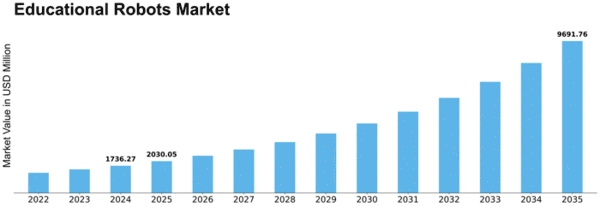
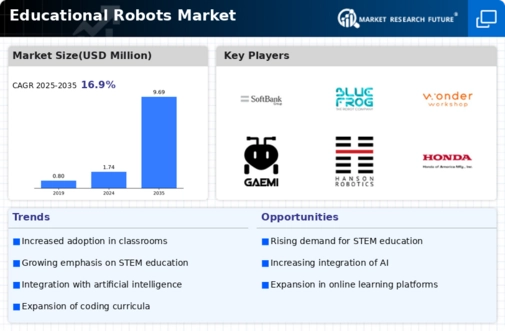
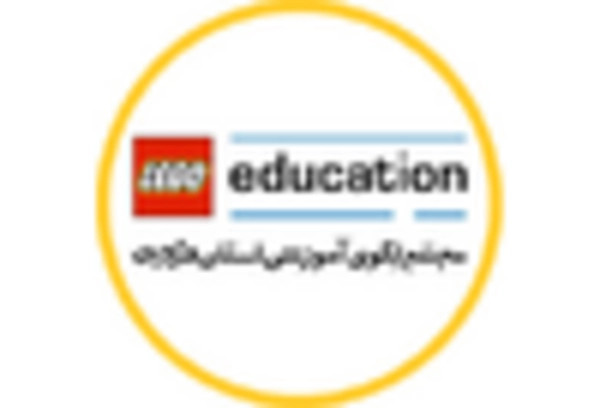

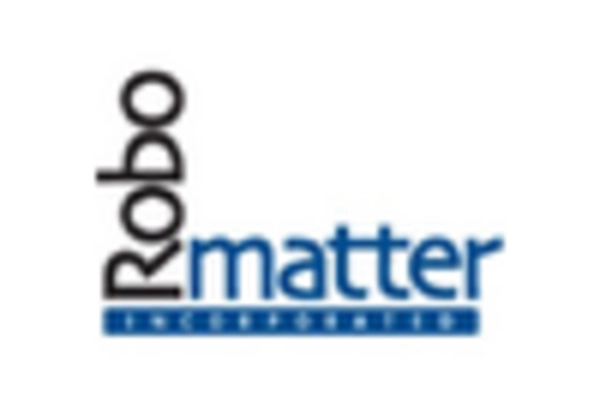

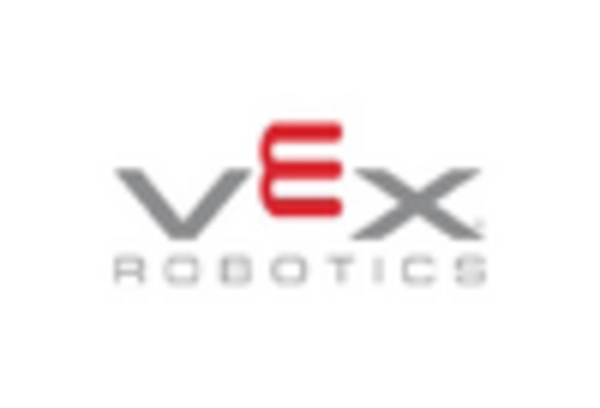
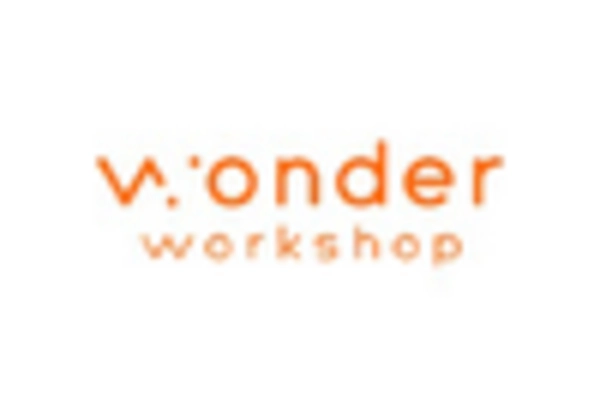









Leave a Comment